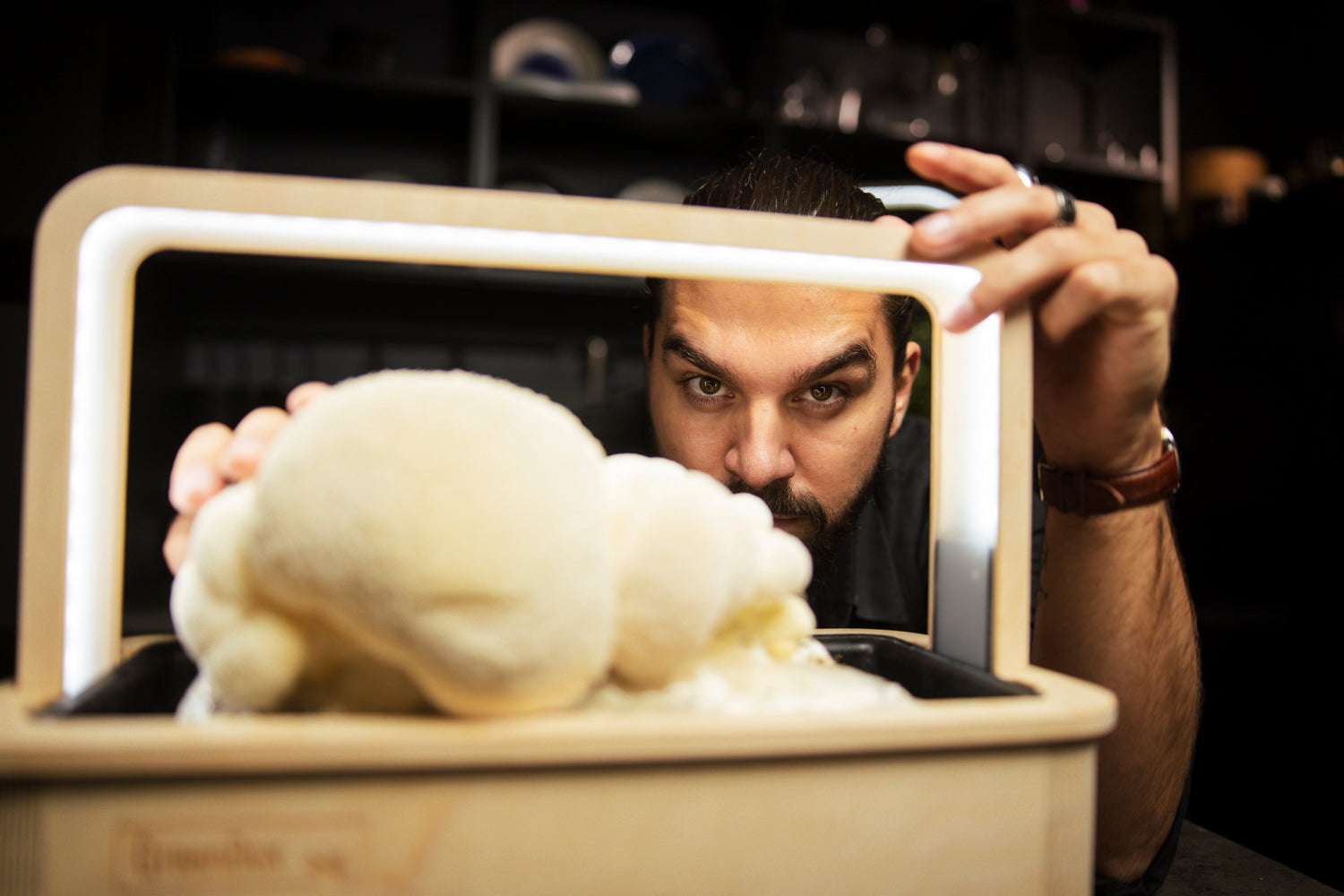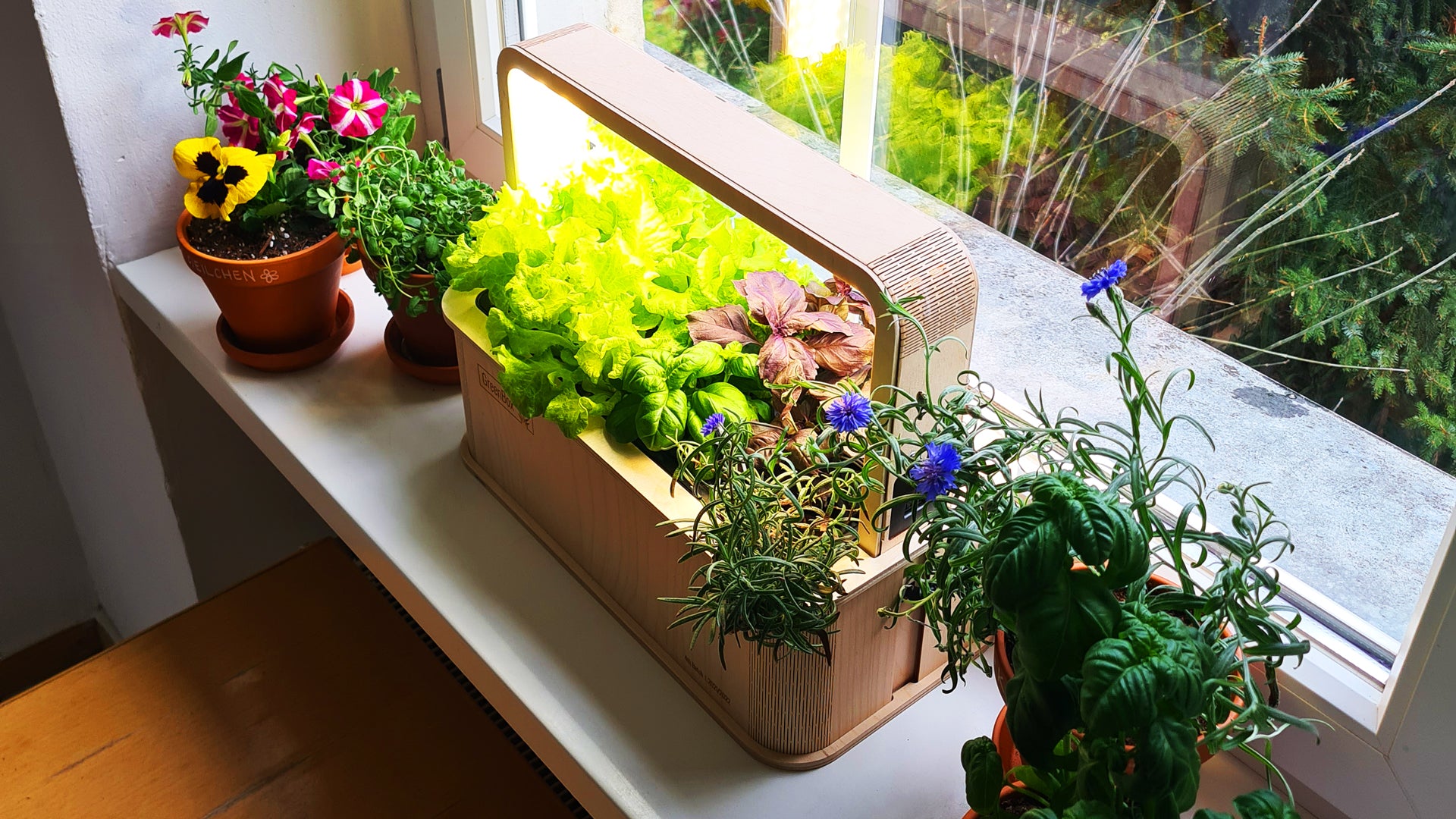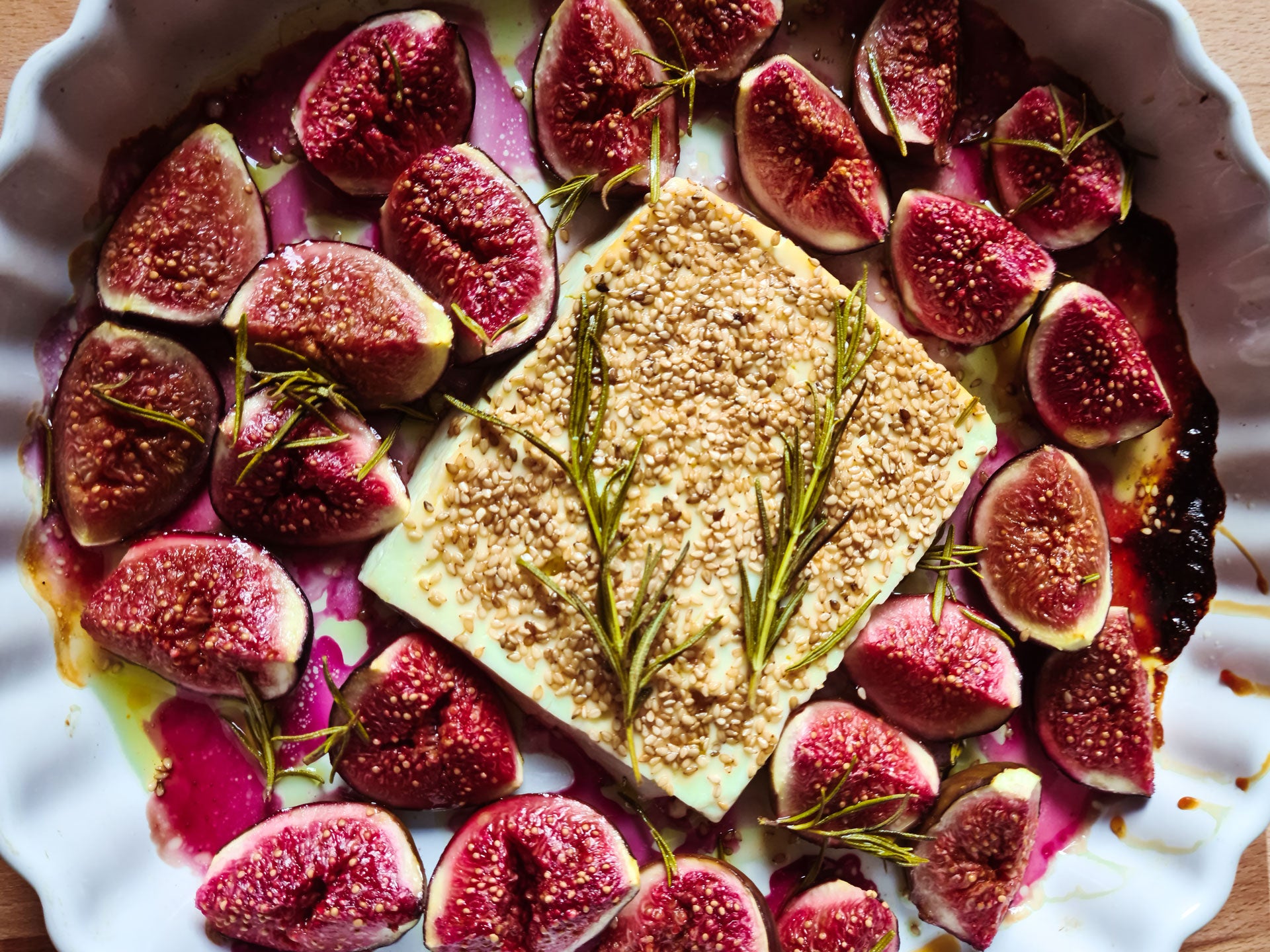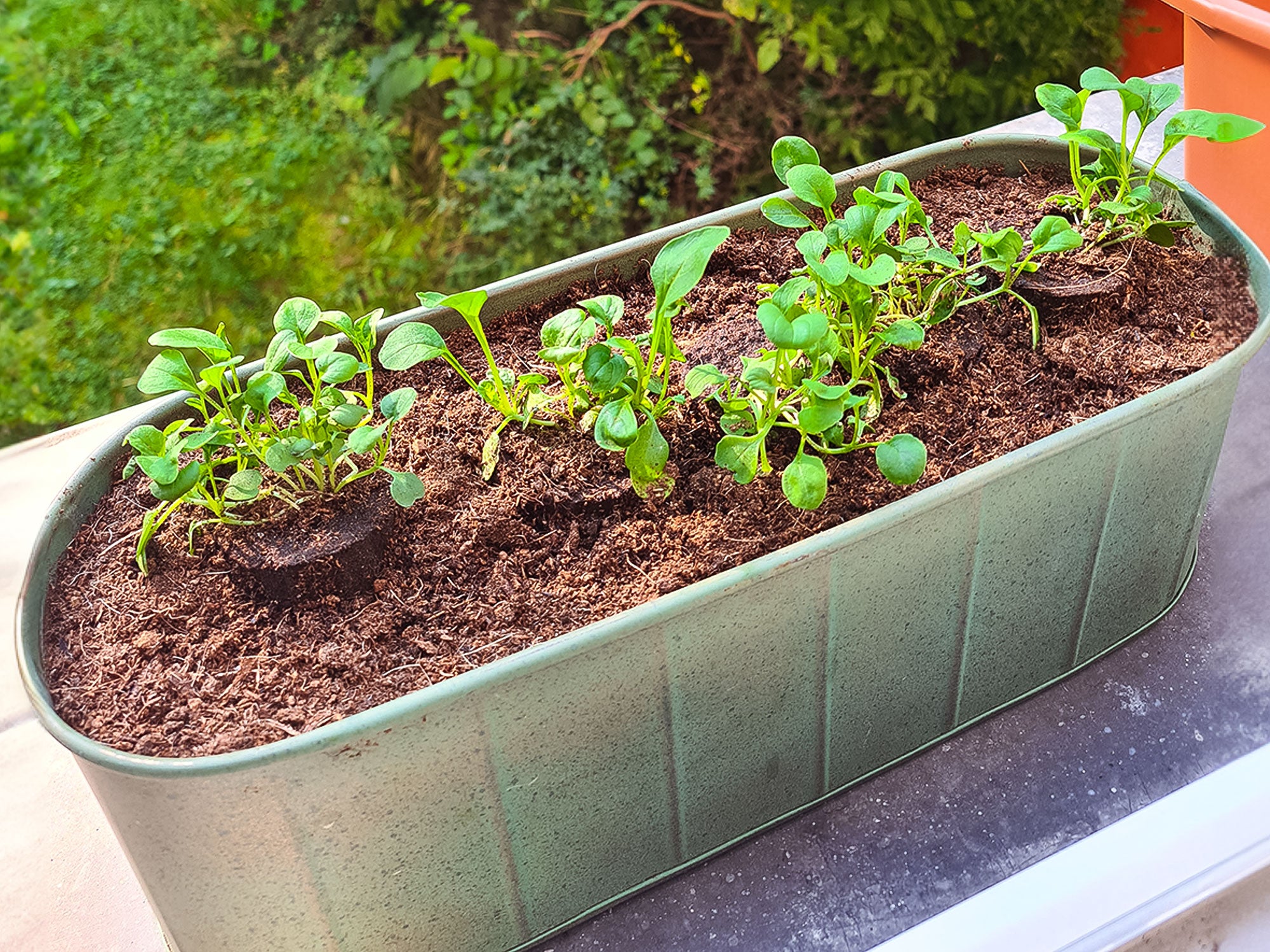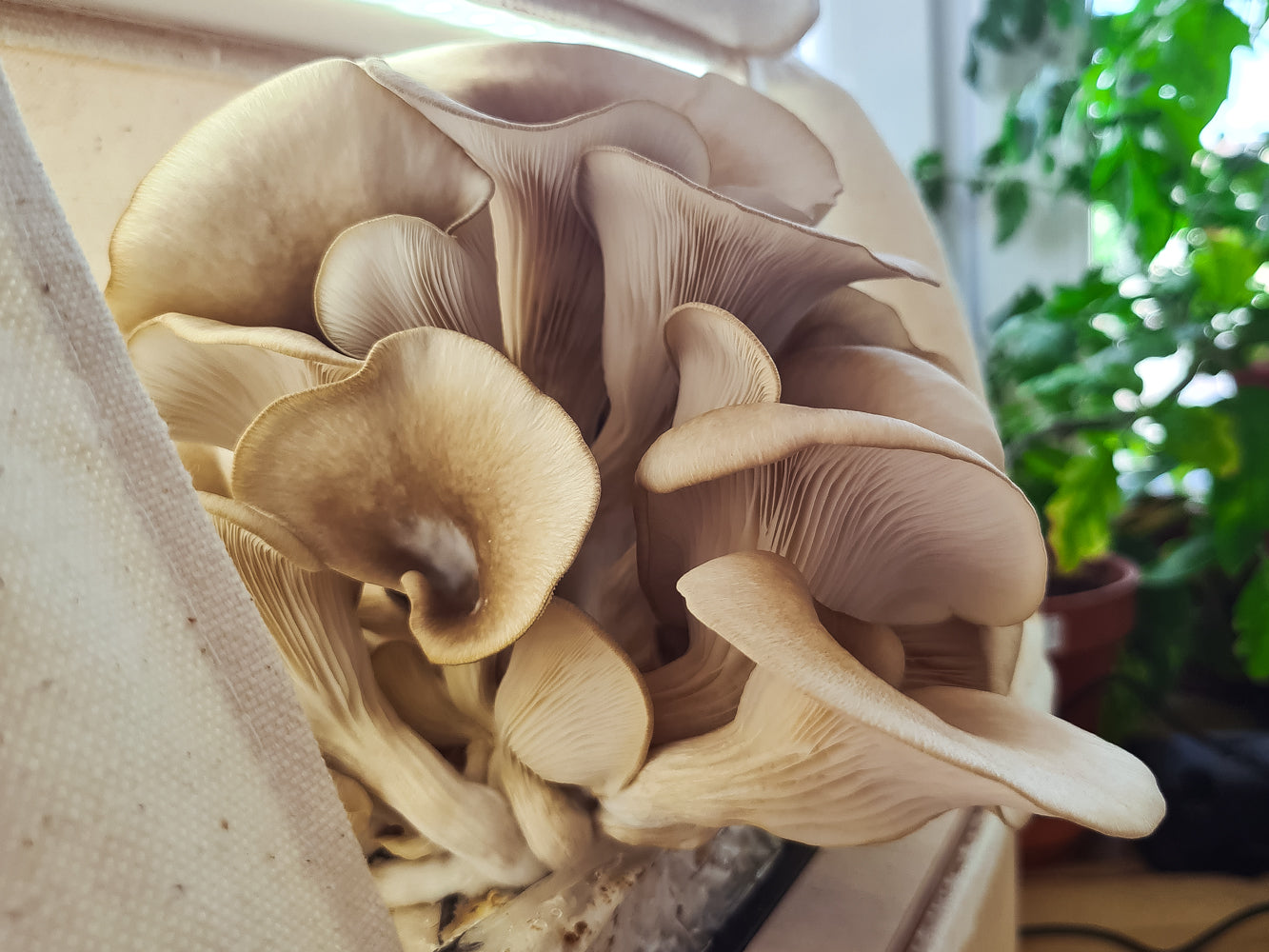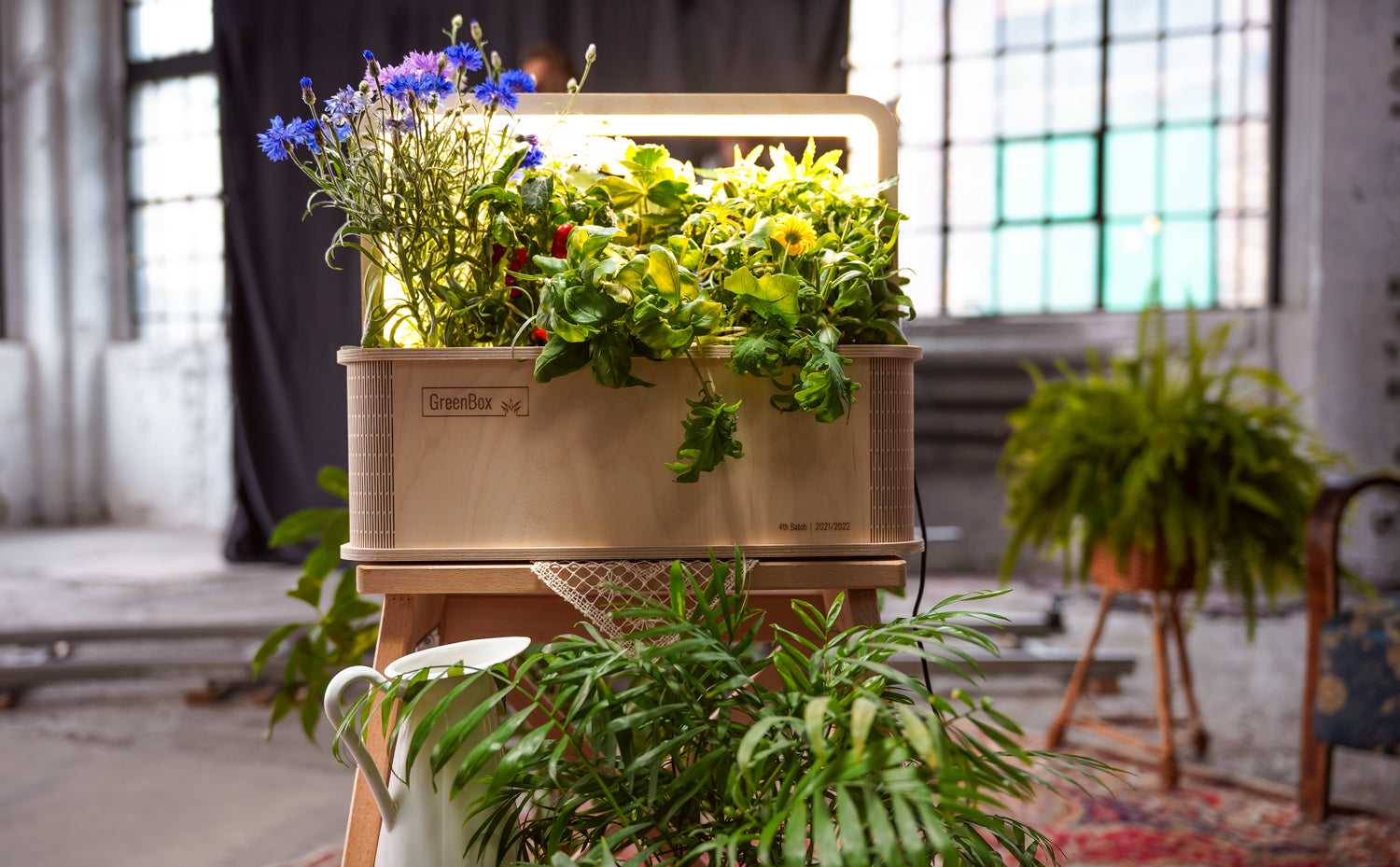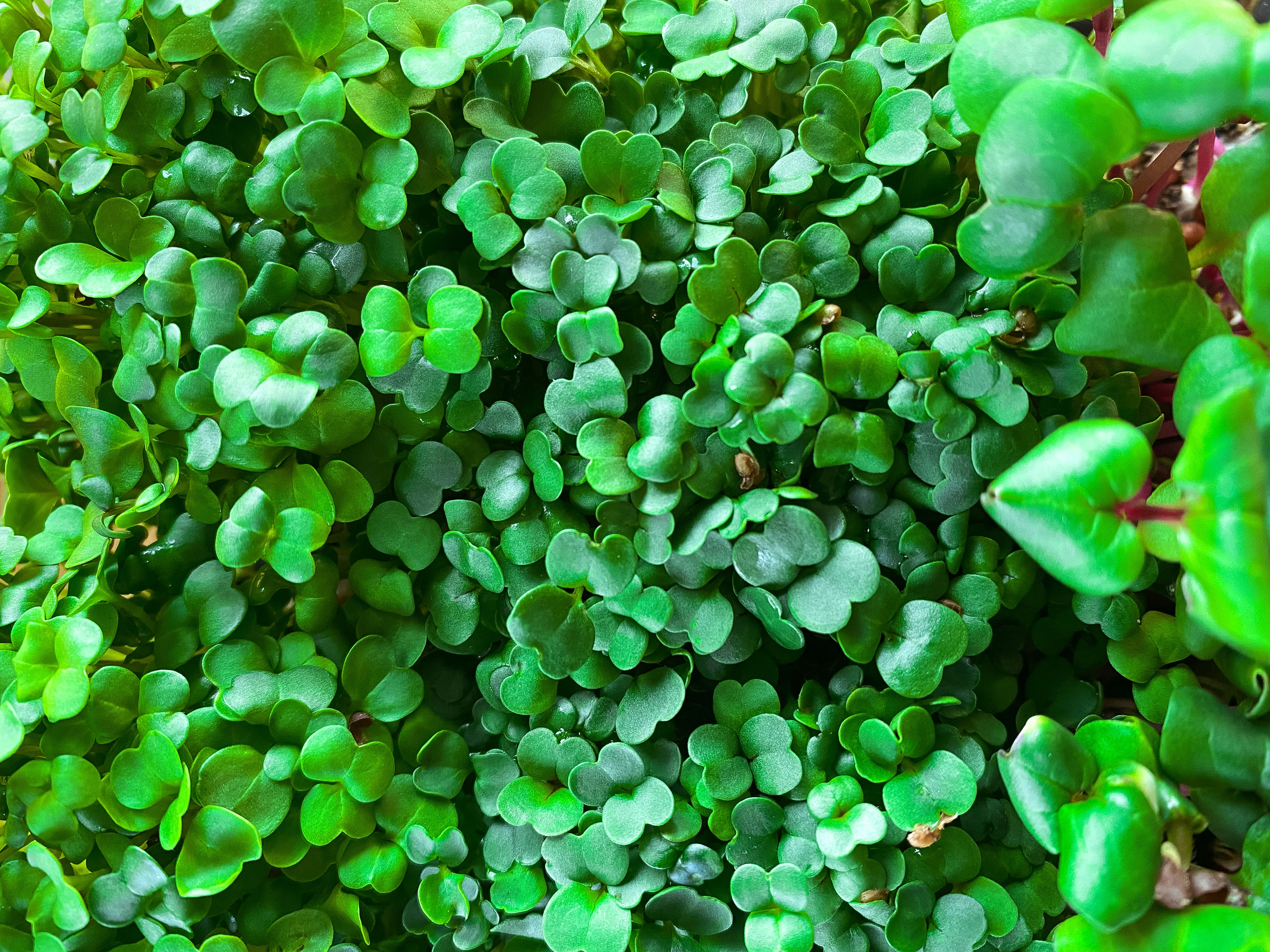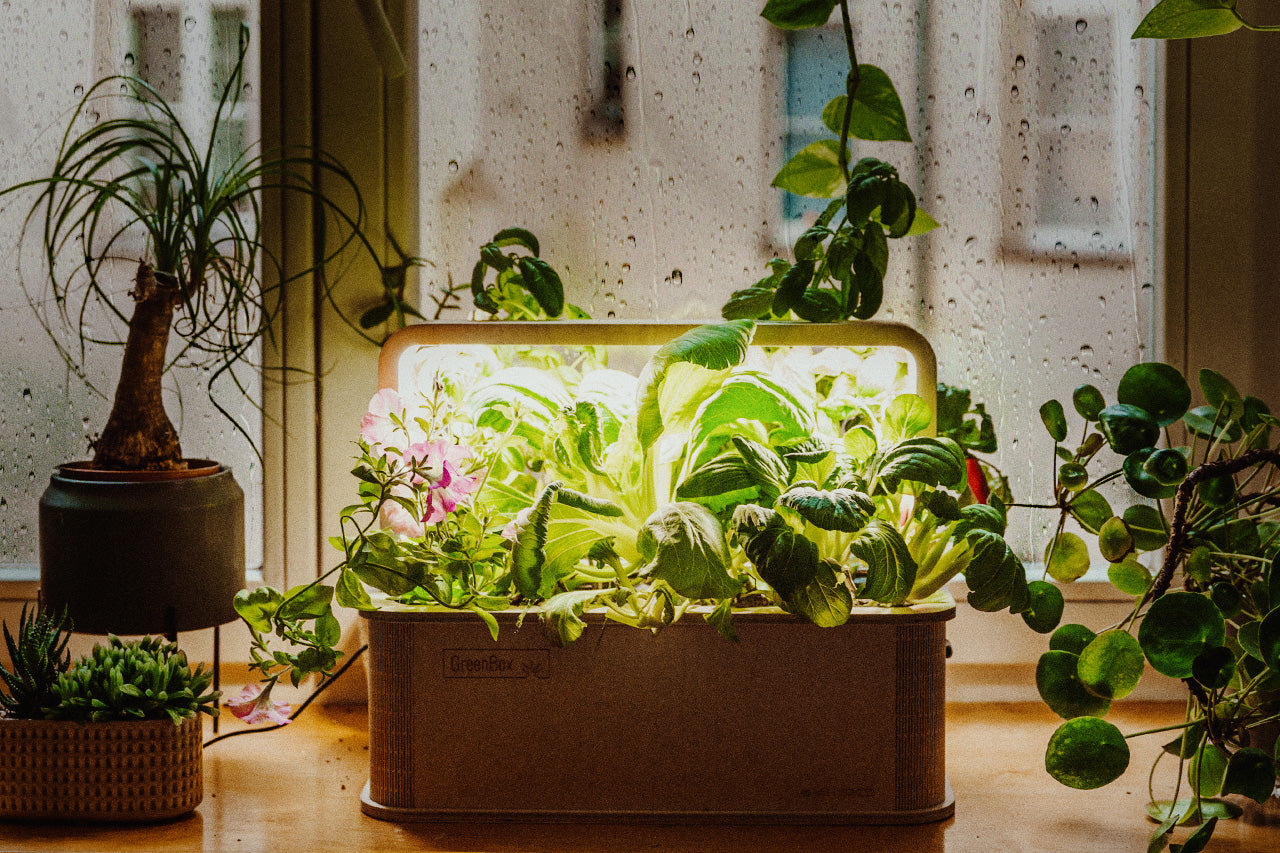
GreenBox - a multifaceted experiment
The journey is the reward - and we are always happy when the green path of indoor gardening produces beautiful flowers, tasty leaves or fruit! With its eight planting spaces, the GreenBox offers us plenty of opportunity to combine different plant species and try out new things.
With the GreenBox, we can fulfill many horticultural wishes all year round: We can grow herbs that we need regularly for flavoring. Or varieties that are not available everywhere. Or even leafy vegetable varieties that are just starting to conquer the European market, such as komatsuna, mizuna or wasabi mustard herb. We can also enliven our spirits with summer flowers in the dreary half of the year. The GreenBox is also suitable for growing miniature versions of man-sized plants such as tomatoes. After all, it's great as an incubator and nursery for plants that we later want to transfer to larger pots or into the open ground.

An early summer - with our own flowering splendor
Good news for the impatient: With the GreenBox, we are independent of the outside summer, masters and mistresses of a sea of flowers, just when the weather has lost all color. With the Summer Meadow Mix , we can bring the colors and lightness of summer right into our living room! The flowers of calendula and cornflower are also culinary superstars.
The PlantPlugs feed a variety of plants, including many flower species. If winter's gloomy weather prospects offer no hope of improvement, we turn to seeds and PlantPlugs! The imitation daylight of the GreenBox gives the seeds the carefree feeling of summer. This allows us to enjoy our personal sea of flowers 5 - 7 weeks after sowing.
While herbs and leafy vegetables are mostly intended for the cooking pot or salad bowl, most of us plant our flowers for purely visual enjoyment. Flowers such as petunia should be treated in the same way: Although it is poisonous, its proud funnel-shaped flowers always evoke the feeling of a warm summer's day when you look at them. In addition, the non-toxic portulaca roses with their many small, delightful flowers set off little lights in several colors.
Many different flowers can embellish not only our living room but also our plate, tea or cake: the all-round genius marigold (also known as calendula) enchants us with the bright yellow-orange of its flowers. Naturopathy also makes use of the soothing effect of the marigold on skin injuries, while the golden yellow of the petals adds a bright touch to salads. The unmistakable blue of the cornflower somehow always reminds us of a cornfield and brings a breeze of country life into our homes. Whether fresh or dried, this royal blue sets accents on dips or cheese platters.
In addition to the summer meadow mix, we also experimented with decorative dwarf sunflowers . After sowing, we were able to record rapid growth success. Sunflowers need space for their roots, even the smallest members of their species - either in the garden or in a flower pot: when staged correctly, the friendly faces of sunflowers add a touch of Tuscany to the balcony or living room.

With the GreenBox to southern America: of treetops and fireballs
Come with us into the jungle! The branched crowns of our cherry tomatoes are reminiscent of a jungle. The dwarf tomato Cherry Hail grows to around 20 am tall and definitely catches the eye.
Many of us only know the tomato when it's ripe, packed in plastic and waiting for us to pick it up in the vegetable section. When we accompany the Cherry tomato Cherry Hail as it grows, this image expands: we can easily pollinate the small, light yellow blossom with a brush - or by gently brushing our hands through its flowers as they display their pollen. After pollination, the flower initially produces a tiny fruiting body, pale green and the size of a pin. Day by day, the volume of these small spheres increases until they begin to glow red!
Together with the mini tomato, the Cherry Tomato and Chili Mix has relatively mild chili plants in store. The hard-working Spicy Passion brings even more splendor to the forest with its smooth leaves and bright pods, and forms new fruits again after harvest.
GreenBox - whether practical, lush or otherwise
Dill and calendula, pak choi and cornflower? We plant what we want! With the 24 PlantPlugs in the Experimental Set, we are always flexible.
The PlantPlug sets such as the Super Vitamin Mix or Asian Leafy Vegetables offer arranged and already tested planting programs to provide us with herbs or leafy vegetables for the preparation of healthy dishes or drinks such as smoothies. The Asian and the Italian herb mix provide us with the herbal essentials for the corresponding national cuisines. The PlantPlugs in the Experimental Set come pure and are available to us for various planting experiments. On the one hand, we can grow herbs that are not available in every (super)market. On the other hand, we can simply plant what we simply can't get enough of.
The PlantPlugs in the Experimental Set are - as in our PlantPlug Sets - the perfect growing medium for our plants: The substrate cones contain all the vital nutrients for herbs, salads, flowers or fruit to germinate, grow and thrive. Naturally, they are free from any biocides, genetically modified substances or other harmful substances.
The GreenBox - for the best start in life for larger plants
What gardener doesn't dream of zucchinis in various shapes
A forest of man-sized tomato trees
Cucumbers for salad or cocktail?
The GreenBox is the perfect cradle and nursery for many large plants!
Cucumbers, zucchinis, eggplants & Co: they are all stately plants, they all have one thing in common: a love of warmth. Central and northern European gardeners face a major challenge with their love of these vegetables: the plants require a number of sun-drenched months from sowing to harvest. After all, they must first reach a certain size in order to produce their coveted fruits. They often need a few more weeks until they are tasty and ripe.
However, the growing season for heat-loving plants in our latitudes is extremely limited, both in terms of hours of sunshine and temperatures. While March of this year (2022) was at its best in many places with its abundant hours of sunshine, ambitious gardeners should not be lulled into a false sense of security too early and take advantage of the sunlight by planting their favorites outdoors. Until around mid-May, temperatures can still drop so much, especially at night, that our tropical guests die of cold outside.
If you only start sowing in mid-May (after the so-called ice saints, the last night frosts of the fading winter half-year), summer and early fall can be over before the fruits are big enough to start ripening, such as tomatoes, chillies or peppers. Even in a golden October, the number of daily hours of sunshine is simply much shorter than in July. It therefore makes sense to grow these - sometimes very exotic - crops indoors under ideal conditions. When the time comes, we can then plant them outdoors with a considerable head start.

It all depends on the right time
Heat-loving plants can spend an undisturbed childhood in the GreenBox: With the cozy temperatures of our indoor rooms and the abundant imitation daylight provided by LED technology, our smart indoor garden offers the best starting conditions for large plants. Once we have the aforementioned ice saints (mid-May) behind us, our green friends no longer need to freeze outdoors at night after they have been amply supplied with energy during the day by the sun, the unsurpassed archetype of light.
The adult plants in the seeds in our collection are all suitable for spending their entire plant life in the GreenBox, where they are well supplied with nutrients from the PlantPlugs and GreenBox Booster. Nevertheless, our herbs, flowers and leafy vegetables can also be relocated to a large pot on the balcony, a raised bed, a flower border or the vegetable garden. There, their roots have more space to develop, which is often noticeable in the larger size of the planted basil, dill, etc.
The end of March / beginning of April is a good time to start growing tomatoes, basil and cucumbers. If you want to celebrate Halloween with your own pumpkin, you should put the seeds into the PlantPlug in mid-April. There is time to sow zucchinis in the GreenBox until the end of April / beginning of May.
In our trial phase
Who hasn't heard of the sweet and sour Physalis or Cape gooseberry, whose protective fruit skin is reminiscent of a lampion, which is dry and straw-like when ripe. We are usually only familiar with the ensembles of fruit and lantern, either well draped in a cocktail or crammed together with their peers in a small, cube-shaped basket or box in the fruit section.
In our trial phase, we have found the physalis plant to be very grateful: Not only does it grow quite quickly, so that it has to be transplanted into a pot on the windowsill or into the warm(!) outdoors in good time. It also looks very attractive. After just a few weeks, the plant produces its first fruits, which we can enjoy after a few weeks.
Our test object baby auberginealso grows quickly. However, you need patience for fruit. The roots of the eggplants definitely need more space than in the GreenBox, at least if they are to produce fruit. Important for the cultivation of all eggplants: allow for ripening time, as eggplants harvested too early contain too much of the poisonous solanine, which is bad for our stomachs. The ripe eggplant still has a shiny skin, but at the same time it yields slightly under light pressure.
We are looking forward to the results of the recently sown snack peppers and the round courgettes. We are particularly curious about the mini cucumbers, which will certainly do very well in a hanging basket with their long tendrils. Not everyone has such an edible highlight on their balcony.
